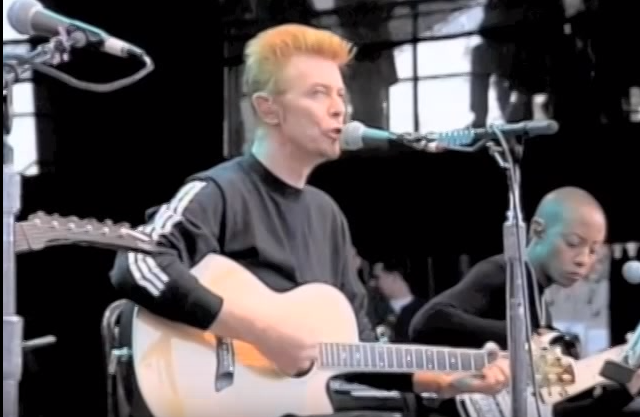One often hears that there’s no money to be made in music anymore. But then, there was no money to be made in music when Bob Dylan started his career either—at least according to Bob Dylan. “If you could just support yourself, you were doin’ good,” he says in an interview clip included in the short compilation above. “There wasn’t this big billion-dollar industry that it is today, and people do go into it just to make money.” He appears to have made that remark in the late nineteen-eighties (to judge by his Hearts of Fire look), by which time both the industry and nature of popular music had evolved into very different beasts than they were in the early sixties, when he made his recording debut.
“Machines are making most of the music now,” Dylan adds. “Have you noticed that all songs sound the same?” It’s a complaint people had four decades ago, thinking of synthesizers and sequencers, and it’s one they have today, with streaming algorithms and artificial-intelligence engines in mind.
Not that Dylan could be accused of failing to change up his sound, or even of refusing to acknowledge what advantages they offered to the individual musician: “You can have your own little band, like a one-man band, with these machines,” he admitted, however obvious the limitations of those machines at the time. But he understood that this new convenience, like that introduced by so many other technological developments, came at a cultural price.
Even in the seventies, recording was becoming perilously easy. In the sixties, no matter if you were the Beatles, the Rolling Stones, or indeed Bob Dylan, “you played around, you paid enough dues to make a record.” But bands of the following generation “expect to make a record right away, without anybody even hearing them.” As for the solo acts, “if you’re a good-looking kid, or you’ve got a good voice, they expect you to be able to do it all,” but “if you don’t have experience to go with it, you’re just going to be disposable,” a mere instrument of producers who took authorial charge over the records they oversaw. All these decades later, when it’s become easier than ever to find any kind of music we could possibly want, nobody must be less surprised than Bob Dylan to hear “so much mediocrity going on.”
Related content:
Bob Dylan’s Famous Televised Press Conference After He Went Electric (1965)
Brian Eno on the Loss of Humanity in Modern Music
The Real Reason Why Music Is Getting Worse: Rick Beato Explains
How Computers Ruined Rock Music
How Bob Dylan Created a Musical & Literary World All His Own: Four Video Essays
Based in Seoul, Colin Marshall writes and broadcasts on cities, language, and culture. His projects include the Substack newsletter Books on Cities and the book The Stateless City: a Walk through 21st-Century Los Angeles. Follow him on the social network formerly known as Twitter at @colinmarshall.


